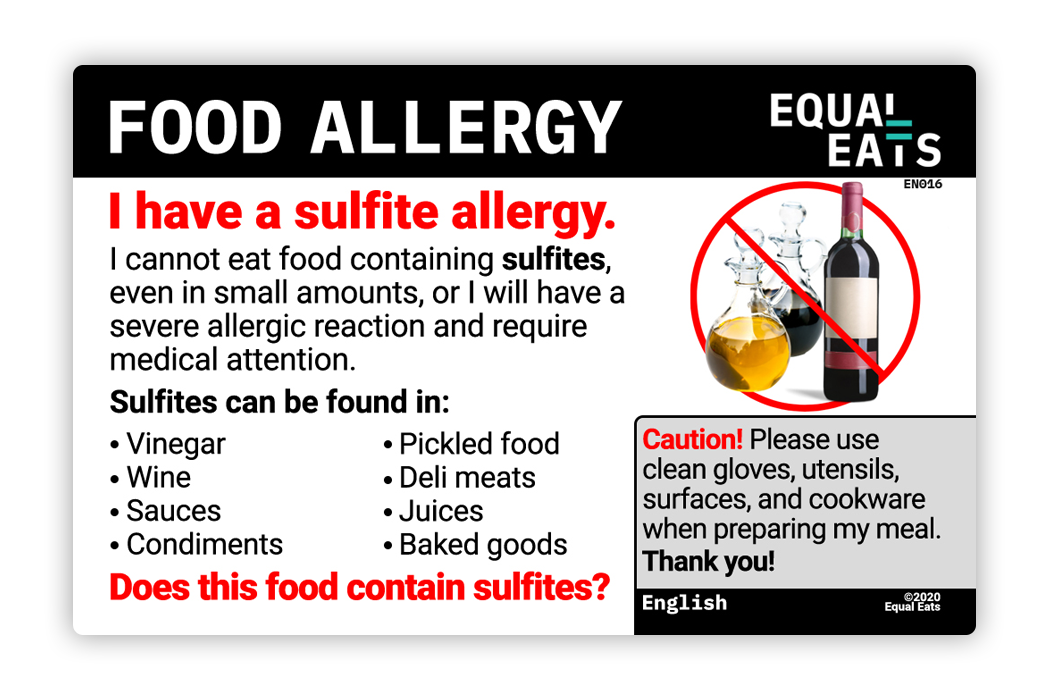EN016
Sulfite Allergy Card

More information:
- Alcoholic and non-alcoholic beer and cider
- Bottled lemon and lime juices and concentrates
- Canned and frozen fruits and vegetables
- Cereal, cornmeal, cornstarch, crackers and muesli
- Condiments, e.g., coleslaw, horseradish, ketchup, mustard, pickles, relish and sauerkraut
- Dehydrated, mashed, peeled and pre-cut potatoes, and frozen French fries
- Dried fruits and vegetables, such as apricots, coconut and raisins, mango, sweet potato
- Dried herbs, spices and teas
- Fresh grapes
- Fruit fillings and syrups, gelatin, jams, jellies, preserves, marmalade, molasses and pectin
- Fruit and vegetable juices
- Glazed and confit (candied) fruits, e.g., maraschino cherries
- Starches, (e.g., corn starch, potato starch)
- Sugar syrups, e.g., glucose, glucose solids, syrup dextrose, corn syrup, table syrup
- Tomato pastes, pulps and purees
- Vinegar and wine vinegar
- Wine
Other possible sources of sulphites
- Baked goods, especially with dried fruits
- Deli meats, hot dogs and sausages
- Dressings, gravies, guacamole, sauces, soups and soup mixes
- Fish, crustaceans and molluscs
- Granola bars, especially with dried fruit
- Noodle and rice mixes
- Snack foods, e.g., raisins, fruit salad
- Soy products
Source: Health Canada - Sulphites
Cross-contact occurs when an allergen is inadvertently transferred from a food containing an allergen to a food that does not contain the allergen. Cooking does not reduce or eliminate the chances of a person with a food allergy having a reaction to the food eaten. Cross-contact can happen through:
- Food to food - e.g. nuts on top of a salad (even if taken off)
- Food to object (cooking surfaces and cookware)

